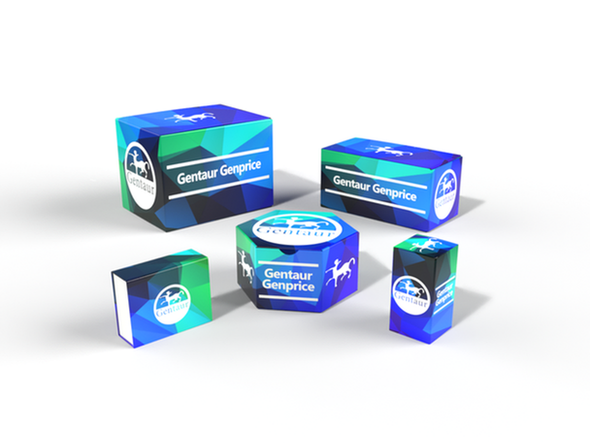Description
TLR10 Antibody | 3275 | Gentaur UK, US & Europe Distribution
Host: Rabbit
Reactivity: Human
Homology: Predicted species reactivity based on immunogen sequence: Bovine: (100%)
Immunogen: TLR10 antibody was raised against a peptide corresponding to 14 amino acids near the middle of human TLR10.
The immunogen is located within amino acids 600 - 650 of TLR10.
Research Area: Innate Immunity
Tested Application: E, WB, IF
Application: TLR10 antibody can be used for detection of TLR10 by Western blot at 0.5 to 1 μg/mL. Despite its predicted size of ~90 kDa, a band correpsonding to TLR10 is observed at ~75 kDa in immunoblot assays. For immunofluorescence start at 2 μg/mL.
Antibody validated: Western Blot in human samples and Immunofluorescence in human samples. All other applications and species not yet tested.
Specificiy: N/A
Positive Control 1: Cat. No. 1369 - Human Lymph node Tissue Lysate
Positive Control 2: N/A
Positive Control 3: N/A
Positive Control 4: N/A
Positive Control 5: N/A
Positive Control 6: N/A
Molecular Weight: N/A
Validation: N/A
Isoform: N/A
Purification: TLR10 Antibody is Ion exchange chromatography purified.
Clonality: Polyclonal
Clone: N/A
Isotype: IgG
Conjugate: Unconjugated
Physical State: Liquid
Buffer: TLR10 Antibody is supplied in PBS containing 0.02% sodium azide.
Concentration: 1 mg/mL
Storage Condition: TLR10 antibody can be stored at 4˚C for three months and -20˚C, stable for up to one year. As with all antibodies care should be taken to avoid repeated freeze thaw cycles. Antibodies should not be exposed to prolonged high temperatures.
Alternate Name: TLR10 Antibody: CD290, Toll-like receptor 10
User Note: Optimal dilutions for each application to be determined by the researcher.
BACKGROUND: TLR10 Antibody: Toll-like receptors (TLRs) are signaling molecules that recognize different microbial products during infection and serve as an important link between the innate and adaptive immune responses. These proteins act through adaptor molecules such as MyD88 and TIRAP to activate various kinases and transcription factors. TLR10 is highly homologous to TLRs 1 and 6 and is most highly expressed in lymphoid tissues. Most recently genetic variation in TLR10 has been associated with contributing to asthma risk. It should be noted that TLR10 exists in mice only as a pseudogene.






